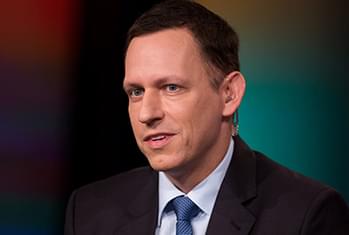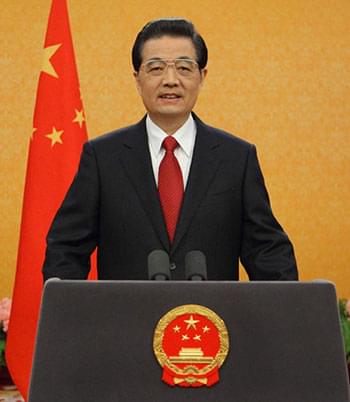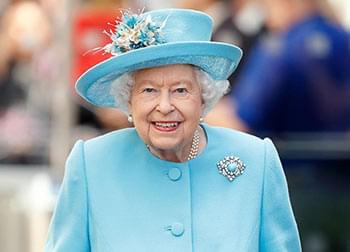A personal note:
FOUR NATURAL FORMS OF INTELLIGENCE
how to win friends and influence people—
using brain science
In 2005, Match.com hired me to help them answer an age-old question: why do you fall in love with one person rather than another? This launched my ongoing study of the biology of personality.
With time, I have discovered that there are four basic brain systems that contribute essential components to who you are, your natural personality: the dopamine, serotonin, testosterone and estrogen systems. Each is associated with a specific set of biologically-based personality traits. I call the individuals who express these suites of traits Explorers, Builders, Directors and Negotiators
Explorer
 Creative
Ideas
Creative
Ideas
- Outside the box
- Risk Taking
- Inspiring
Builder
 Logistical
Process
Logistical
Process
- Concrete
- Planning
- Stabilizing
Director
 Technical
Tech
Technical
Tech
- Experimental
- Skeptical
- Decisive
Negotiator
 Diplomatic
Service
Diplomatic
Service
- Insightful
- Contextual
- Consensus
Explorers

Explorers express more of the traits linked with the dopamine system. They tend to be curious, creative, spontaneous, energetic, daring, risk-taking, mentally flexible, enthusiastic and independent. They like novelty and adventure; they think outside the box and they inspire. They make good entrepreneurs, artists and entertainers, as well as Charismatic Leaders. Winston Churchill, Richard Branson, Gloria Steinem and Angelina Jolie are most likely foremost Explorers.
-
Peter Thiel

Peter Thiel
Co-Founder: PayPalFacebook: First Outside Investor
Early Endorser: Bitcoin
Funds:
Artificial Intelligence
Life Extension
seasteading
breakthrough technologies with radical new ideasHATES: Uniformity & regulation
SUPPORTS: Individualism
Math whiz, chess prodigy
-
Lang Lang

Lang Lang
Concert Pianist"Flare, dazzling technique and charisma."
"Rock-like superstar"
"Conquers crowds with youthful bravado."
""Daredevil tendencies" "extremes of dynamimcs and rhythm."
"Ebullient" "fun to watch" "took a sold out Royal Albert Hall by storm."
-
Gloria Steinem

Gloria Steinem
Journalist and ActivistDaring
Energetic
Iconoclastic
Independent-minded
Creative
Builders

Builders express more of the traits linked with the serotonin system. They tend to be traditional, conventional and cautious (but not scared); they observe social norms. They follow the rules, respect authority, enjoy making plans and schedules, and are conscientious and risk averse. They are concrete and logistical thinkers who focus on the details and the process; they are stabilizers. They make superb managers and soldiers and tend to be Authoritative Leaders. Mike Pence, Hu Jintao, Queen Elizabeth and Al Gore are most likely foremost Builders.
-
Mike Pence: Former US Vice President

BA History; Fraternity affiliation
Called himself "Principled conservative" "Common sense conservative"
Traditional Values:
Sexual abstinence education
restrict abortion
opposes: stem cell research, gays in the militaryEvangelical Christian:
organized, structured religionNationalism: walked out of football game when kneeling "disrespects our soldiers, flag, and national anthem"
-
Hu Jintao

Hu Jintao
Former President, People's Republic of China"Pragmatic technocrat," not a revolutionary.
Reserved, self-deprecating, modest.
Consensus building (rather than authoritarian).
Calm, contained, cautious.
Orderly, systematic.
Frugal: dislikes extravagance.
"Eight honors and eight shames:" moral code: selfless, moral.
-
Queen Elizabeth II

Traditional
Conventional
Modest: not flamboyant
Does the "right" thing.
Directors

Directors express more of the traits linked with the testosterone system. These men and women tend to be analytical, logical, direct, decisive, skeptical, tough-minded, emotionally contained, rank oriented and competitive, as well as experimental and excellent at understanding “rule-based systems”—including engineering, math, computers, mechanics, and/or music. They are strategic thinkers and Commanding Leaders. Steve Jobs, Albert Einstein, Beethoven, Margaret Thatcher (and probably Hillary Clinton) are most likely foremost Directors.
-
Steve Jobs

Steve Jobs
Apple ComputerHe proudly flouted authority, yet he embodied extreme self-discipline.
“Svengali of the digital revolution“ “Brash,” “mercurial,” “notoriously prickly,” “fiercely demanding,” “brutally honest.”
Perfectionist, exacting, demanding, impatient.
“Jobs’ ability to focus in on a few things that count…get things right… and market things as revolutionary are amazing.” — Bill Gates
-
Margaret Thatcher

Margaret Thatcher
Former Prime Minister of the UK"The Iron Lady"
Determined
Focused
Aggressive
Tough minded
Direct
Decisive
-
Hillary Clinton

Direct, decisive, tough-minded.
Considered joining US Marines in 1975.
First woman partner at her law firm.
First female senator, New York.
When asked why she was attracted to Bill, she said: "He wasn't afraid of me."
Negotiators

Negotiators express more of the traits in the estrogen system. They are synthetic, holistic, contextual, long term and imaginative thinkers. They are good at reading postures, gestures, facial expressions and tone of voice. And they excel at people skills--being intuitive, insightful, trusting, empathetic and nurturing. They make excellent educators, medical workers and salespeople. And they tend to be Diplomatic Leaders with the ability to broker consensus. Abraham Lincoln, Bill Clinton, Charles Darwin and Oprah Winfrey are most likely foremost Negotiators.
-
Oprah Winfrey

Sees the big picture: "web thinking".
Verbal and People skills.
Intuitive: "The only time I have made a bad decision is when I didn't follow my instinct."
Emotionally expressive.
Educator / reader
-
Bill Clinton

Contextual web thinking: "I think it is important to have a synthesizing mind."
Language skills.
People skills.
Emotionally expressive.
Compassionate: "I feel your pain."
-
Charles Darwin

Negotiator / Explorer
Contextual, synthesizing, holistic thinking.
Imaginative.
Verbal skills, people skills, intuitive.
Agreeable, compassionate.
Daring, curious, creative.
We are all a combination of the traits in all four of these basic biologically-based trait constellations. But we express some more than others—giving each of us a distinct personality. And your unique intellect affects how you are likely to communicate, work in a team, innovate and lead, as well as love and bond with friends, kin and romantic partners.
So to explore Match’s question on why we fall in love with “him” or “her,” I made a questionnaire to see how you score on all four of these basic styles of thinking and behaving. Then I watched on this, and a related website, to see who was drawn naturally to whom.
Known as the Fisher Temperament Inventory (FTI), this initial questionnaire has now been taken by over 15 million people in 40 countries.
Using these data, I co-founded a business consulting firm, NeuroColor, and created our second-generation NeuroColor business questionnaire. It illustrates how people of these four basic styles of thinking are likely to work, build a team, innovate and lead. And it shows you how to make winning connections with others at work and outside of work—using solid brain science.
Many before me have explored the foundations of personality. Plato intuitively described these four styles of thinking and behaving, as have several other philosophers, academics and laymen.
But all of the psychometric questionnaires used today to measure aspects of inherent personality structure have been developed from linguistic analyses or behavioral studies—including the Myers-Briggs Type Indicator and the “Big Five.” Instead, I constructed my questionnaire (the FTI) directly from data on brain architecture and physiology.
The FTI is also different in that it emphasizes who you are not, as well as who you are. And it shows you how you score on all four scales, whereas almost all other current questionnaires put the test-taker into one bucket or another (which is not how the brain works). Last, unlike any other extant personality questionnaire, I and my colleagues used fMRI brain scanning to prove that my questionnaire actually measures what it promises to measure—specific brain systems that orchestrate how you think and act.
Please take my free personality test in any of my recent books or at: TheAnatomyOfLove.com
Or contact NeuroColor to get information on how to take the second-generation test and use these data in business: NeuroColor.com
Also see links below for further explanation of my personality test and more data on the biology of personality.
I have never met two people whom I thought were alike—and I’m an identical twin. Nevertheless, there are innate patterns to personality. And once you understand your own natural styles of thinking and behaving--and learn to recognize those of others--you can interact with colleagues, clients, friends and lovers in remarkably effective new ways. As I maintained in a recent article in the Harvard Business Review, “When you understand the brain, you can reach anyone.”
I have now used my understanding of natural personality styles to advise organizations on a variety of subjects, including: How to match au pairs with families, teach more effectively in international schools, do special jobs in the military, enhance relations between money managers and their clients, train commercial real estate developers to sell; advise advertisers to design more compelling ads; show doctors how to interact more effectively with patients; train major international online retailers, coach couples therapists to bond with clients; advise addiction counselors on couch-side manner, and show men and women how to choose a long-term mate and stay happily together.
May my data help you discover more about yourself, win friends and influence people naturally, boost company profits, even make you a million dollars.
Very Best wishes to you, Helen Fisher
Geographic Distribution
;)
This map shows the responses of 39,913 American men and women who took the Fisher Temperament Inventory on the dating site, Chemistry.com, a subsidiary of Match. The group’s average age was 37; 56.4 % were women; 89% were heterosexual. Explorers (dopamine/yellow) were 26% of the participants; Builders (serotonin/royal blue) were 28.6%; Directors (testosterone/red) were 16.3%; and Negotiators (estrogen/green) were 29.1% of the participants. Data were analyzed by state. For example, those in California who took this test primarily expressed the traits in the dopamine system; they were, foremost, high-dopamine Explorers.
Articles
- Fisher, HE (2012) “WE HAVE CHEMISTRY!” The Role of Four Primary Temperament Dimensions in Mate Choice and Partner Compatibility. Geoff Warburton, Ed. The Psychotherapist, Autumn 2012:Issue 52: 8-9. United Kingdom
- If You Understand How the Brain Works, You can Reach Anyone.” Harvard Business Review. Alison Beard. 2017 (see link)
- Neural Correlates of Four Broad Temperament Dimensions: Testing Predictions for a Novel Construct of Personality. Brown, LL, BP Acevedo and HE Fisher, PLoS One Nov 13, 2013 DOI: 10.1371/journal.pone.0078734 2013
- Fisher, H. E., H. D. Island, J. Rich, D. Marchalik, and L. L. Brown. 2015. Four broad temperament dimensions: Description, convergent validation correlations, and comparison with the Big Five. Frontiers in Psychology: Personality and Social Psychology 6:1098. 2015
- 2011 Fisher, H.E. Serial monogamy and clandestine adultery: Evolution and consequences of the dual human reproductive strategy. 2011. In S.C. Roberts (Ed.).Applied Evolutionary Psychology. New York, NY: Oxford University Press. Pp 96-111
- The Female Mind: Biology of the 21st century woman. (2009) In The Edge of Change: Women in the Twenty-First-Century Press. JO Nicholson, PJ Creedon, WS Lloyd and PJ Johnson (Ed.) pp 27-41